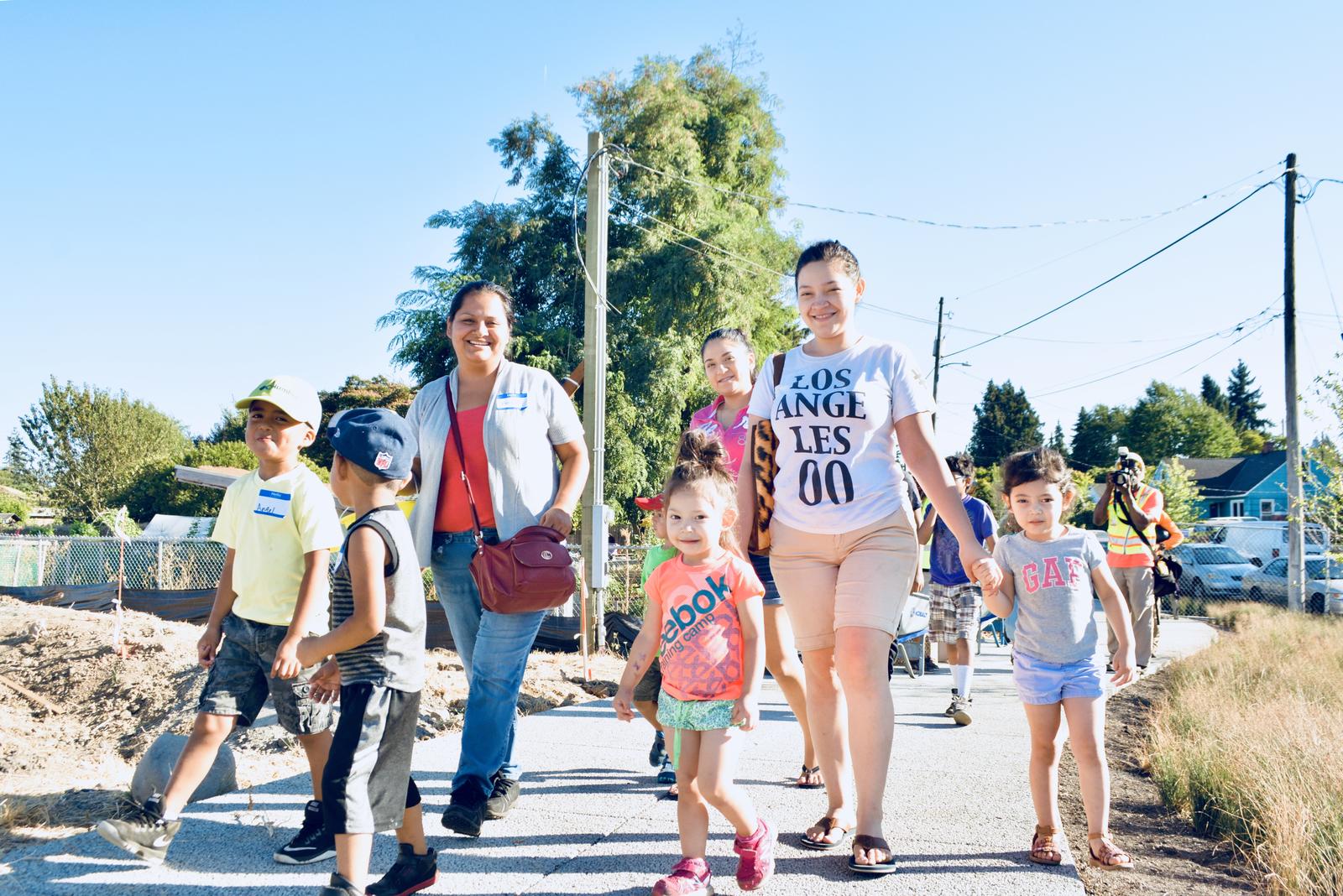This guest blog post was written by Tiffany Lam, research adviser.
Some schools are experimenting with traffic gardens like the one pictured above. Photo: Fionnuala Quinn/Bureau of Good Roads
Join Us on October 24 10am PT/1pm ET
This guest blog post was written by Tiffany Lam, research adviser.
Some schools are experimenting with traffic gardens like the one pictured above. Photo: Fionnuala Quinn/Bureau of Good Roads
This toolkit provides school districts and schools with guidance and resources for a comprehensive communications strategy that supports Safe Routes to School.
This fact sheet describes key steps to ensure your program is well positioned for funding, provides ideas for where to look for funding, and highlights the breadth of funding sources that programs from around the country are currently accessing.
“There are too many places in this country where it’s easier to buy a grape soda than a bunch of grapes,” explains Caroline Harries, Associate Director at The Food Trust, when she describes food deserts. Although there are many definitions of food deserts, they are commonly understood as places where fresh, nutritious foods are not accessible within a reasonable or convenient distance to travel. They are often defined as one mile in an urban area and ten miles in a rural area. In a car, those distances are no problem.
This fact sheet highlights the importance of improving personal safety from crime and violence in order to promote park access.
Facebook, Twitter, school websites, partnerships: what do you use to get the word out about Safe Routes to School?
In winter 2017, our team got a question: “Have you ever looked at how people can walk to and from grocery stores from senior centers? Maybe Safe Routes to Grocery Stores?” We were thrilled. We had been working for the past year to refine a concept called Safe Routes to Healthy Food, which works to overcome the barriers to walking, biking, and taking public transportation to places where people get healthy foods. This was a chance to dive in to see how the challenges and solutions we’d been exploring played out in a real neighborhood. Asian Services in Action, Inc.

Safe Routes to Parks is a national framework for ensuring that people can walk, bike or roll to a park or greenspace in a way that is appealing and safe from traffic and personal danger. Photo Naim Hasan Photography
This toolkit can help communities and residents participate to make their vision of healthy, safe, walkable streets to parks real.
Each quarter, we take a look at state progress with implementing the Transportation Alternatives Program (TAP). For the quarter covering April to June 2018, states obligated nearly $131 million in TAP funding, with all states except for three making forward progress. (Obligation means that the state DOT has committed funding to a local TAP project and is a key step towards actually getting the project built or implemented.)
Last month, the Safe Routes Partnership released the 2018 version of Making Strides: State Report Cards on Support for Walking, Bicycling, and Active Kids and Communities. The report cards rank states on their policy approaches on a range of areas, including Complete Streets, school siting, physical activity planning, and more.
Key takeaway:
Key takeaway:
Key takeaway:
Key takeaways:
July is Park and Recreation Month! Walkable, bikeable park access means double the opportunity for physical activity – on the way to the park and within it!